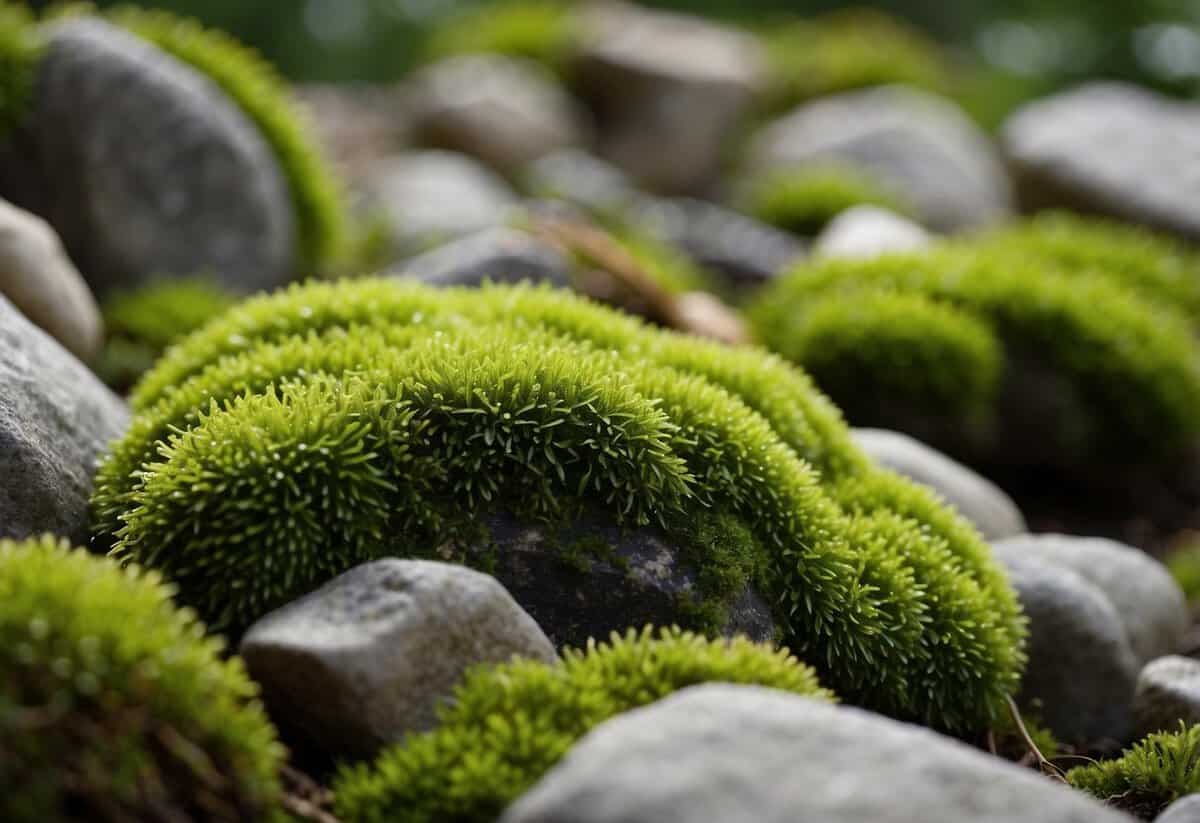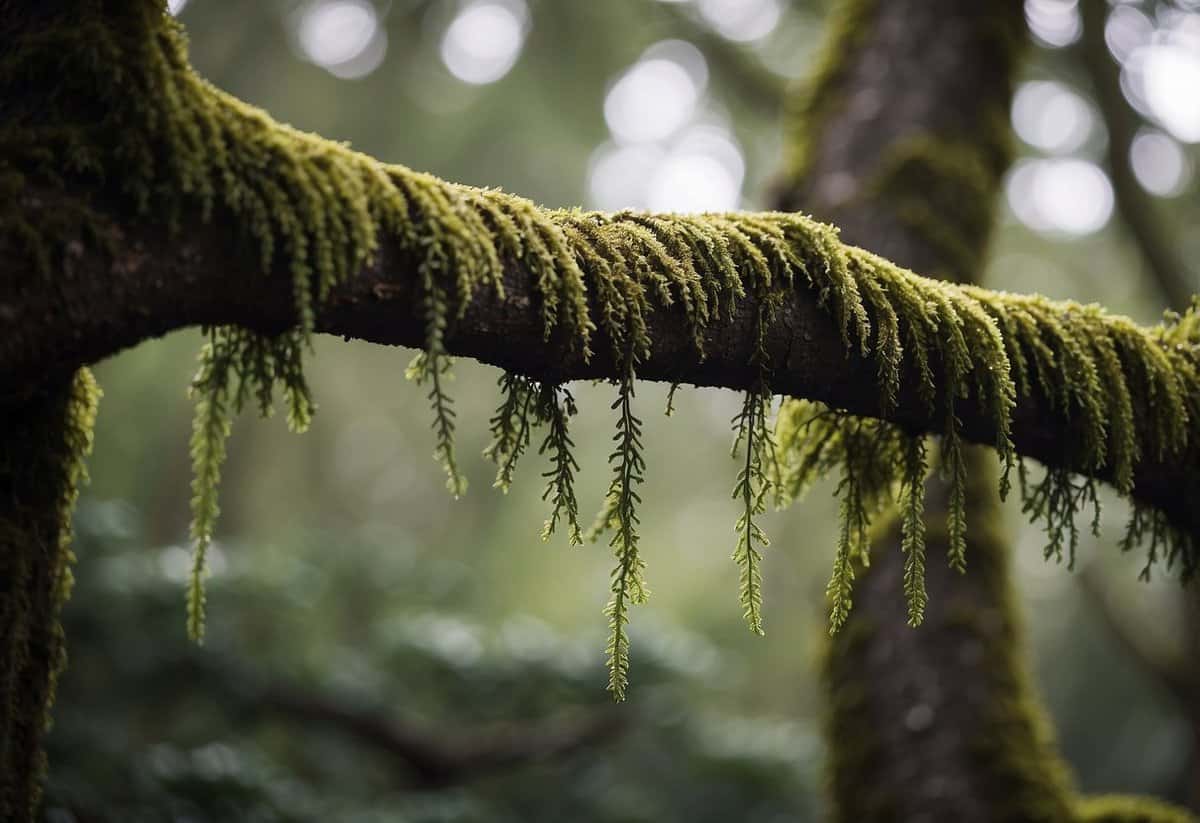Moss Garden Tips: Easy Ways to Create a Tranquil Oasis
Creating a moss garden can add a unique and serene beauty to your outdoor space. Whether you have a shady area in your garden or just love the idea of a soft, green carpet of moss, starting your own moss garden can be a fulfilling project. What are the best tips to ensure your moss garden thrives?

You’ll find that growing a moss garden is simpler than you might think. With the right conditions and a bit of care, moss can flourish in various environments. Your garden will soon be a peaceful and enchanting retreat, covered with lush moss.
1) Choose Shady Spots

Moss thrives in shaded areas. It loves the dim, cool environments where other plants might struggle. These spots provide the perfect conditions for moss to grow lush and green.
Look for areas under trees or beside buildings. These places often have the right amount of shade and protection that moss needs.
Avoid areas with full sun. Moss can dry out quickly when exposed to too much sunlight. Your moss garden will flourish in these cooler, shaded spaces.
2) Use Acidic Soil

Moss thrives best in acidic soil. Aim for a soil pH around 5.5 to create the ideal environment.
If you’re unsure about your soil’s pH, you can test it using a soil meter. Adjust the pH if needed by adding soil acidifiers available at garden stores.
Incorporating acidic soil helps moss establish and grow more effectively in your garden.
3) Maintain Moisture Levels

Keeping your moss garden moist is key. Moss loves damp environments, so regular misting is essential. Use a spray bottle or the mister setting on your hose to keep the moss evenly hydrated.
Check the moisture level frequently, especially in spring and summer. Moss can dry out quickly in warm weather. Keep the soil consistently moist to help your moss thrive. If you see it drying out, add more water immediately. For more details, visit here.
4) Use Natural Rock Accents

Natural rock accents can make your moss garden look amazing. By adding elements like moss rocks, you can create a charming and inviting atmosphere.
Rocks with moss can be used to line pathways, making them both functional and beautiful. You might also consider creating a moss waterfall by arranging rocks in a cascading fashion.
Consider adding small rock gardens to your space. These can serve as focal points, drawing attention to the unique textures and colors of the moss.
5) Plant Ferns Near Moss

Planting ferns near moss can create a lush and balanced garden. Ferns thrive in similar shady and moist conditions as many types of moss, making them perfect companions.
When planting ferns, dig a hole as deep as the root ball and twice as wide. Ferns like to spread, so space them at least two feet apart for healthy growth. Avoid covering the crown of the fern to prevent root rot as suggested by experts.
By pairing these plants, you create a diverse and vibrant garden with varying textures and shades of green.
6) Remove Weeds Regularly

Weeds can quickly take over your moss garden if not managed. They not only compete for space but also nutrients and sunlight.
Use a gentle rake or even your hands to pull out the weeds. Uprooting them completely is important to prevent regrowth.
You might also consider using products containing glyphosate, which effectively target weeds. Be cautious to apply them directly on the weeds and not on the moss itself.
Regular inspection and timely removal will keep your moss garden healthy and lush. Make this a part of your routine to enjoy a clean and beautiful garden.
7) Prune Overhanging Branches

Pruning overhanging branches is important in maintaining your moss garden. Too much shade can prevent moss from getting the sunlight it needs to thrive.
Use a clean and sharp pruning saw to carefully remove branches that block light. Always check which way a branch will fall to avoid any accidents.
Regularly pruning also helps to improve airflow, which can reduce the chance of moss becoming too moist and causing issues. Keep your tools clean to prevent spreading any disease to your plants.
8) Avoid Walking on Moss

Walking on your moss garden can cause damage. The delicate leaves and soil get compacted, making it harder for the moss to thrive.
If you need to access an area, use a piece of plywood. This spreads your weight and helps protect the moss.
Keeping foot traffic to a minimum ensures your moss stays healthy and lush.
9) Use Peat Moss Sparingly

Peat moss can be great for gardens, but you should use it sparingly.
It helps retain moisture, making it a good amendment for dry, sandy soil. Too much peat moss, though, can hold excessive water, making the soil too soggy.
Mix peat moss well with other soil components to ensure balanced water retention and proper drainage. This helps prevent soil from becoming dense and compacted. To learn more about its benefits, check out tips on using peat moss in your garden. Using it moderately will benefit your plants without overwhelming the soil.
10) Add Compost to Soil

Adding compost to your moss garden soil can greatly improve its quality. Compost enriches the soil by adding valuable nutrients and improving its structure.
To add compost, simply sprinkle a thin layer on top of the soil. Spread it evenly using a rake.
As compost breaks down, it will release essential nutrients that help your moss thrive. This will also enhance soil drainage and aeration.
Choosing the Right Moss

Choosing the right moss means looking at factors like how much shade your garden gets and the type of soil you have. Some moss varieties handle sunlight better, while others need full shade.
Shade-Tolerant Varieties
If your garden has lots of shady spots, certain mosses will thrive there. American tree moss (Climacium americanum) loves the shade and looks like tiny pine trees. Common fern moss (Thuidium delicatulum) can also do well in partial sunlight and turns golden in the fall.
Feather moss (Hypnum imponens) grows in thick, green mats and works well in shady areas. It’s important to match the moss variety to the light conditions in your garden to ensure it grows well and looks beautiful.
Soil Preferences
Different mosses have different soil needs. For example, mosses like common fern moss do well in slightly acidic soils with a pH between 5.0 and 5.5. It’s a good idea to test your soil’s acidity before planting. Most mosses prefer a moist environment, so keeping the soil damp is key.
When preparing the soil, clear away debris and weeds to create a smooth, clean surface. Mosses generally don’t need rich soil, making them a low-maintenance plant option. By selecting mosses suited to your soil, you’ll create a lush, green garden with minimal effort.
Preparing the Garden Area

Before you start planting moss, it’s crucial to prepare the garden area properly. This involves clearing existing vegetation and ensuring proper drainage to create the ideal environment for moss to thrive.
Clearing Existing Vegetation
The first step is to clear the area where you want to plant moss. Remove all existing weeds, plants, and grass. This ensures that the moss has a clear space to grow without competition.
Use a rake to clear leaves and any plant debris. This will help you create a bare surface.
Once the area is clear, it’s important to compact the soil. Moss prefers a firm surface. You can tamp down the soil by walking over it or using a tamper tool. Compacting helps moss establish better.
In some cases, you may need to test the soil. Some moss types thrive in specific conditions. Testing can guide you to adjust the soil pH if necessary.
Ensuring Proper Drainage
Proper drainage is key. Moss needs a moist environment but doesn’t do well in standing water. Examine your garden’s drainage patterns.
If water tends to pool, consider reshaping the land or installing a simple drainage system. Creating slight mounds or using trenches can direct excess water away.
Additionally, moss often prefers acidic soils. If your soil is too alkaline, you can amend it with compost or leaf mold to make it more suitable.
Finally, make sure the area isn’t too sunny. Moss thrives in shady spots, so try to find or create areas with dappled or indirect sunlight.
By taking these steps, you set the stage for a lush and healthy moss garden.
Caring for Your Moss Garden

Caring for your moss garden involves paying close attention to moisture levels and safeguarding your moss from potential threats like pests and diseases.
Watering Tips
Moss grows best in consistently damp conditions. It’s important to keep the garden hydrated evenly without overwatering. Using a gentle spray nozzle helps to avoid damaging the delicate moss. Early morning is the best time to water as it allows the moss to absorb moisture before the heat of the day.
Consistency is Key: Moss needs regular watering, especially during dry spells. Depending on your climate, daily watering might be necessary.
Avoid Puddles: Ensure water drains well. Moss dislikes standing water, so make sure your garden has good drainage.
Shaded Areas: Moss thrives in shaded areas. If possible, place your moss garden where it will get indirect sunlight to reduce evaporation and retain moisture.
Managing Pests and Diseases
Moss is relatively resistant to pests and diseases, but you should still be vigilant. The most common issues are mold and algae, which thrive in overly wet conditions.
Prevent Mold and Algae: Control moisture to prevent mold and algae. Water just enough to keep the moss damp, not soaked.
Manual Removal: If you notice mold or algae, carefully remove it by lifting the affected moss patch and replacing it if necessary.
Pest Control: Regularly check for common garden pests like slugs or snails. You can remove them by hand or use natural repellents. Avoid chemical pesticides as they can harm the moss.
Keep your garden clean by removing fallen leaves and other debris regularly, which can attract pests and diseases.
With proper care, your moss garden will remain lush and green, providing a tranquil and beautiful space.







